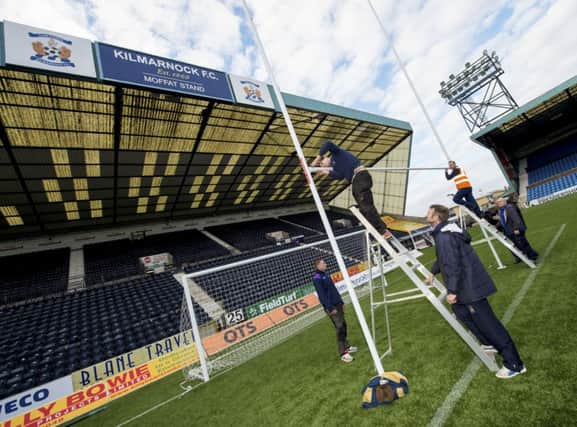Cracking code of how Rugby Park turned to football


As the name suggests, it was originally a rugby ground. But complicating matters, the club which played at the original Rugby Park – near the present-day one – was Kilmarnock Football Club, which for about the first five years of its existence from 1869 onwards played what was essentially the rugby code, hence the ground’s name.
In that era, both sports were vying to become established and lines of distinction between them were blurred. Football was played according to different rules throughout the country, giving rise to hybrid versions of the two games. Often players would take part in both sports and clubs would offer both codes. Indeed, the first rugby union formed in Scotland in 1873 was titled the ‘Scottish Football Union’, and it was not until 1924 that it assumed its current title of ‘Scottish Rugby Union’.
Advertisement
Hide AdAdvertisement
Hide AdRugby reached Scotland in about 1853 when brothers Alexander and Francis Crombie brothers brought it to the Edinburgh Academy from Durham. In 1868, some pupils of Kilmarnock Academy formed a club and played a few games among themselves. Only two of these pioneers’ names survive – John Wallace and Thomas Ferguson.
CONNECT WITH THE SCOTSMAN
• Subscribe to our daily newsletter (requires registration) and get the latest news, sport and business headlines delivered to your inbox every morning
The fashionable sport then was cricket and in 1869 Kilmarnock Cricket Club began playing football in winter. The Academy boys joined them and re-formed that year as Kilmarnock Football Club, opening their club to all. They played at the original Rugby Park at South Hamilton Street for about five years and formulated their ‘Rules for Play’, some of which make interesting reading: Rule 6 states that ‘if a player catches the ball when bouncing above the knee, he may, if he chooses, take a run with it’; Rule 7 that ‘any player may hold, push with his hands or trip any player of the opposite side when within four yards of the ball’; Rule 8 that ‘though it is lawful to hold a player with the ball, this does not include attempts to throttle or strangle, which are opposed to all principles of the game’.
Despite having opted for the rugby code, there were advocates for the association code in the club. Indeed, the Minute Book of 1872 notes that three rule books had been acquired and studied – two on football rules and a third on Union rules. But, after a meeting in the town’s George Hotel, a resolution was passed that ‘The Rules of the Rugby Union be accepted in toto’.
That year, Queen’s Park FC, pioneers of football in Scotland, invited Kilmarnock FC to play a match ‘according to the rules of the FA’, but Kilmarnock declined saying that ‘they played Union rules’. However, Queen’s Park were not easily deterred and the following year suggested Kilmarnock join the SFA and contribute towards a Scottish Cup.
This proposal stoked heated debate. Both codes had their lobbyists and the records hint at vote rigging among the pro football brigade. The club agreed to the proposal but – echoing the dissension among the ranks – it was also accepted that games could still be played under Union rules. However, when the issue went to the AGM in December 1873, Kilmarnock FC resolved: ‘We play no other than Association rules.’
Formally this brought to an end rugby in the club – although two months later they played Paisley Craigielea under Union rules.
SCOTSMAN TABLET AND IPHONE APPS